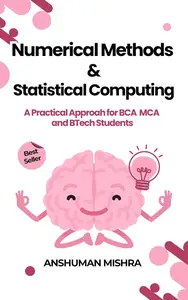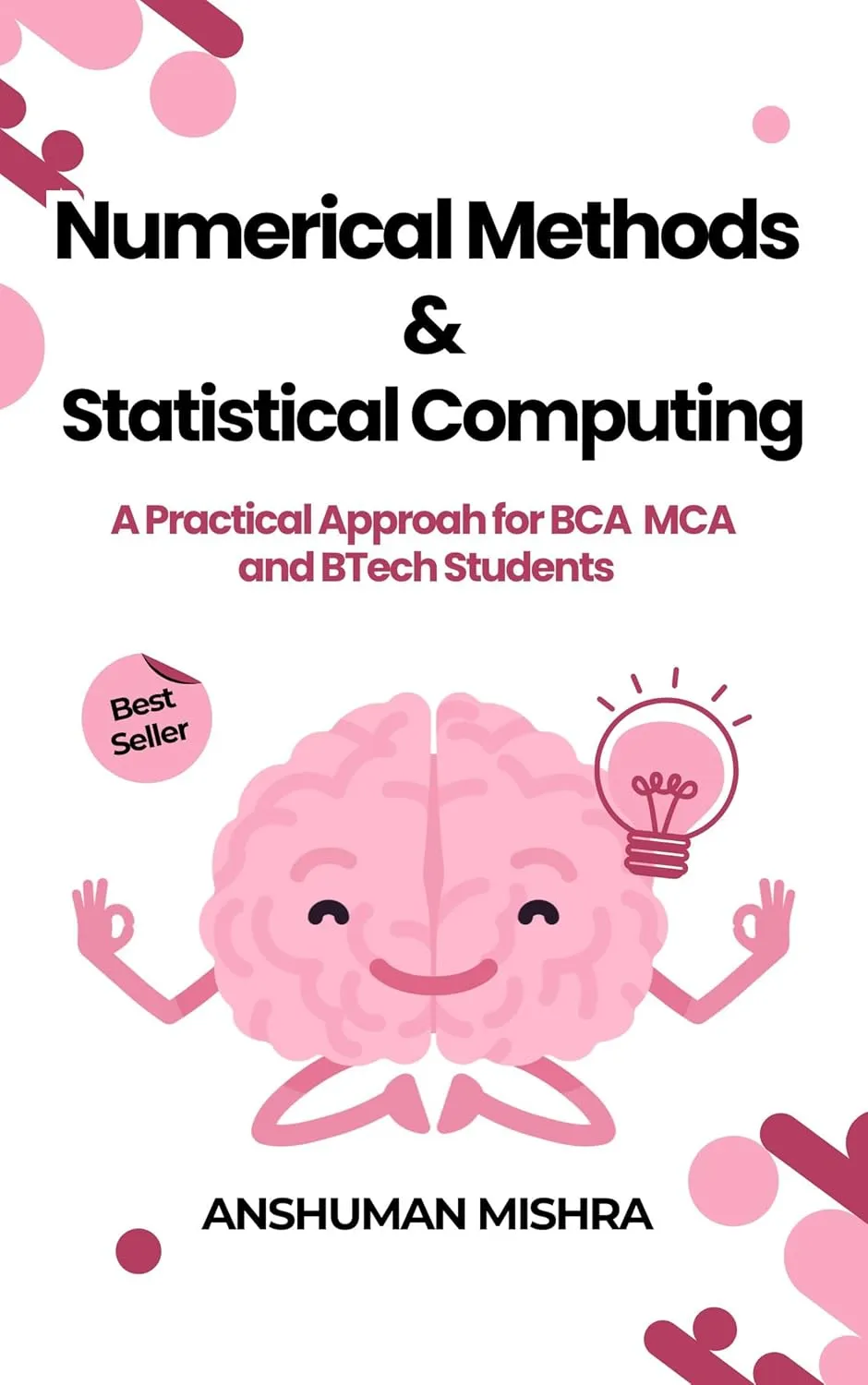Numerical Methods & Statistical Computing: A Practical Approach for BCA, MCA, and BTech Students" (Data Science) by Anshuman Mishra
English | April 5, 2025 | ISBN: N/A | ASIN: B0F2SM3X9G | 395 pages | EPUB | 0.41 Mb
English | April 5, 2025 | ISBN: N/A | ASIN: B0F2SM3X9G | 395 pages | EPUB | 0.41 Mb
📖 About the Book
In today’s data-driven and algorithm-powered world, the need to understand numerical computation and statistical analysis has never been more crucial. Numerical Methods & Statistical Computing: A Practical Approach for BCA, MCA, and BTech Students is a comprehensive and student-friendly textbook designed to meet the academic and applied requirements of undergraduate and postgraduate computer science and engineering programs.
This book covers both classical numerical techniques and modern statistical methods in a unified manner, providing a balanced mix of theoretical background, real-world applications, and hands-on practice. Whether you're a BCA student trying to master numerical roots, an MCA scholar exploring curve fitting, or a BTech student solving differential equations or analyzing statistical data, this book serves as your complete guide.
Organized into 13 well-structured chapters, the content aligns with university curricula and offers a progressive learning path from foundational concepts in statistics and probability to advanced numerical methods used in computation, analysis, engineering simulations, and scientific research.
🎯 What This Book Covers
- Foundations of Statistics: Learn how to represent and summarize data using measures of central tendency, dispersion, and graphical techniques like histograms and scatter plots.
- Correlation and Regression Analysis: Understand the relationships between variables with Pearson’s and Spearman’s correlation, and apply regression analysis for prediction and modeling.
- Probability and Random Variables: Gain insight into random phenomena using discrete and continuous probability distributions, and calculate expected values and variances.
- Error Analysis: Discover how errors affect digital computations, and explore the concepts of round-off, truncation, convergence, and algorithm efficiency.
- Numerical Methods: Master root-finding algorithms (like Newton-Raphson and Bisection), matrix-solving techniques (such as Gauss elimination), and iterative solvers (like Gauss-Seidel).
- Interpolation and Curve Fitting: Learn various interpolation methods and fit data using least squares for real-world modeling.
- Numerical Differentiation and Integration: Perform calculus operations on discrete data using formulas like Richardson Extrapolation, Simpson’s Rule, and Gaussian Quadrature.
- Differential Equations: Solve ordinary differential equations using Euler’s, Runge-Kutta, and finite difference methods with practical applications.
- Sampling Techniques: Understand and apply various statistical sampling methods used in real-world surveys and experiments.
🔍 1. Comprehensive Coverage
This book bridges the gap between statistics and numerical computation, offering a one-stop solution for both subjects as per the modern university syllabus.
🛠️ 2. Hands-on Practical Learning
With integrated examples, step-by-step problem solving, and software-based exercises (especially using MS Excel), students gain practical exposure and computational thinking.
📊 3. Industry-Relevant Applications
The techniques covered are not only exam-oriented but also highly applicable in industries such as software development, data science, machine learning, scientific research, and operations management.
🎯 6. Aligned with University Curriculum
Whether you are studying under a technical university, a central/state university, or an autonomous institution, the structure and topics closely follow typical BCA, MCA, and BTech syllabi in India and abroad.



